As Liverpool faced PSG in a high-stakes Champions League clash, one fan turned to the meditative art of slow photography to quieten the nerves.
As the clock ticked down toward Liverpool FC’s pivotal Champions League clash with Paris Saint-Germain, that familiar knot of anxiety began to tighten in my stomach. For any die-hard Red, these high-stakes nights are both a privilege and a torment—the weight of expectation, the fear of disappointment, the sheer emotional investment in a game that, rationally, I know I cannot control. But this time, instead of succumbing to the usual pre-match jitters, I turned to an unlikely remedy: slow photography.
The Art of Slow Photography
Slow photography is a patient, almost meditative approach to image-making. It demands careful observation, deep engagement, and a willingness to embrace imperfection. Using large-format cameras and shooting on paper negatives—a technique dating back to the 1840s, four decades before the Football League was even founded—I found myself drawn into a process that was as much about mindfulness as it was about art.
Paper negatives have a slow ISO, requiring longer exposures, but their real charm lies in the organic imperfections of the paper’s fibres and the uneven absorption of chemicals during development. Each image requires meticulous setup, long exposure times, and individual hand development in the darkroom. The result is a tactile, hands-on experience. Paper negatives produce a distinctive, unpredictable aesthetic with rich tones and characteristic flaws, giving each image a historic feel that is deeply tied to the physical nature of early photographic processes.
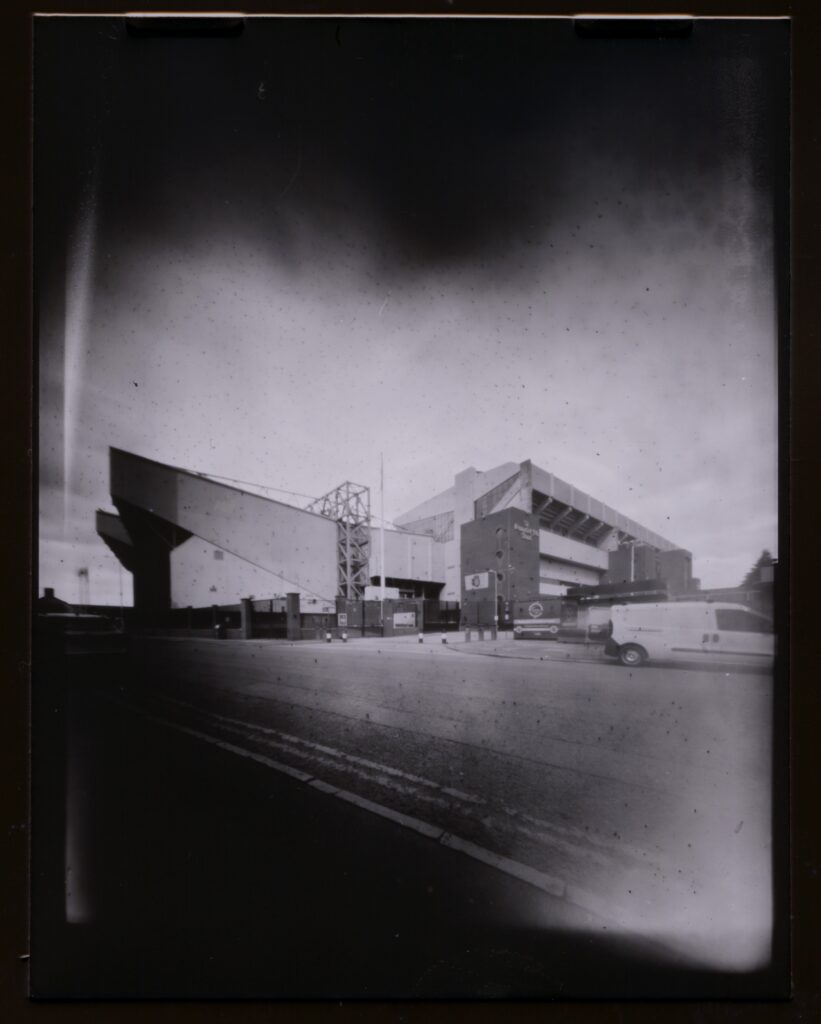
Channeling Nerves Into Creativity
Big games bring big nerves—it’s an inevitability. Instead of pacing the house, I decided to channel that nervous energy into something creative. Armed with my homemade Lego cameras and a stash of vintage photo paper, I set out to document the late-morning build-up at Anfield. The deliberate, unhurried process of slow photography forced me to step out of my head and into the moment. Each shot became a small act of mindfulness, a way to quieten the noise and focus on the here and now. This approach aligns with research from the Journal of Positive Psychology (2016), which found that engaging in creative activities—such as photography—can significantly improve well-being. People who spent time on creative pursuits reported feeling more relaxed, happier, and more fulfilled. The tactile nature of traditional photography, from loading the paper to developing the prints, adds an extra layer of sensory engagement, enhancing these benefits.
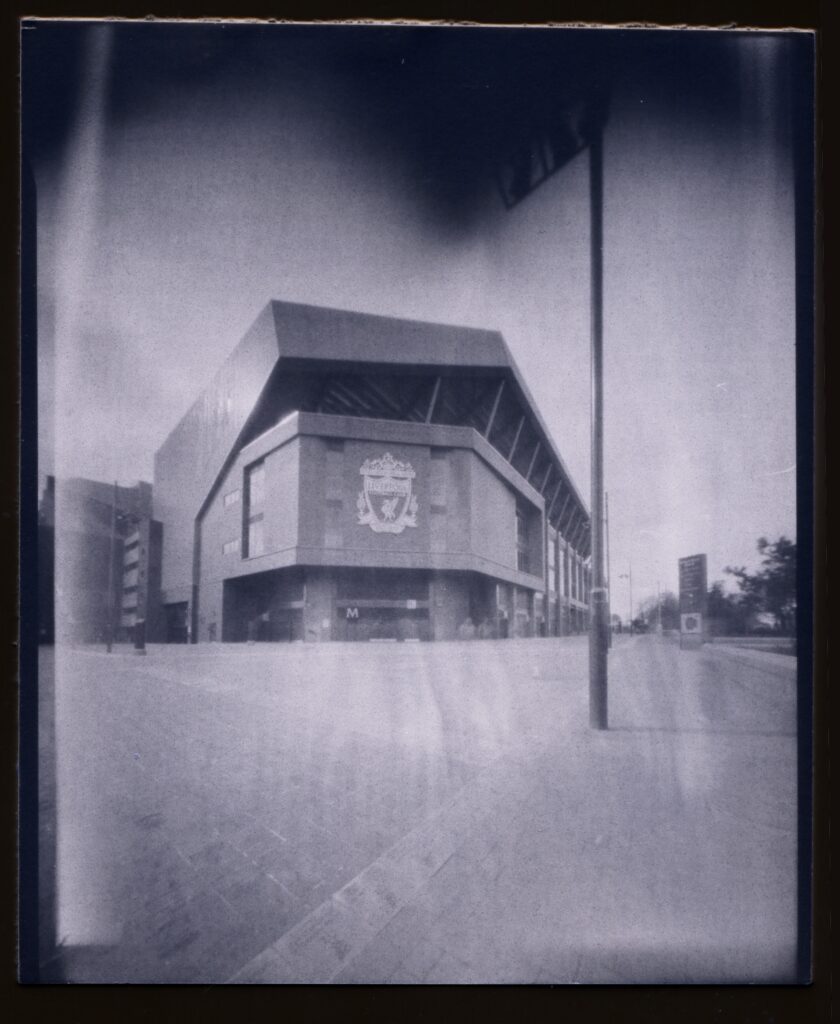
Pinhole Photography: Letting Go of Control
Pinhole photography strips image-making down to its purest form. With no viewfinder and no settings to adjust, it forces you to embrace the unknown. Long exposures of over sixty seconds transform fleeting moments into dreamlike images, blurring the boundaries between reality and memory.
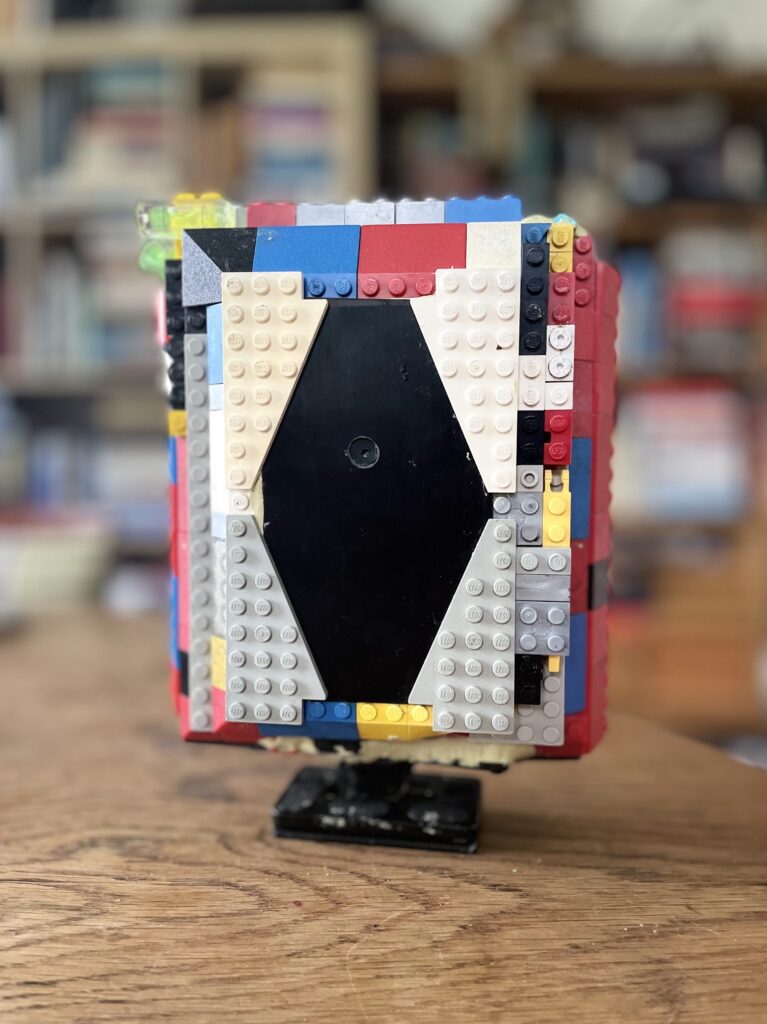
I wanted to test my new homemade Lego pinhole camera for light leaks. It has an extremely shallow depth, giving it a wide field of view, and the pinhole itself was repurposed from an Instant Diana. This setup results in an F-stop of 117. Using a simple app on my phone to calculate exposure times, most images took between 30-90 seconds to capture. The camera is a work in progress and will need refining, but it has already opened up new creative possibilities.
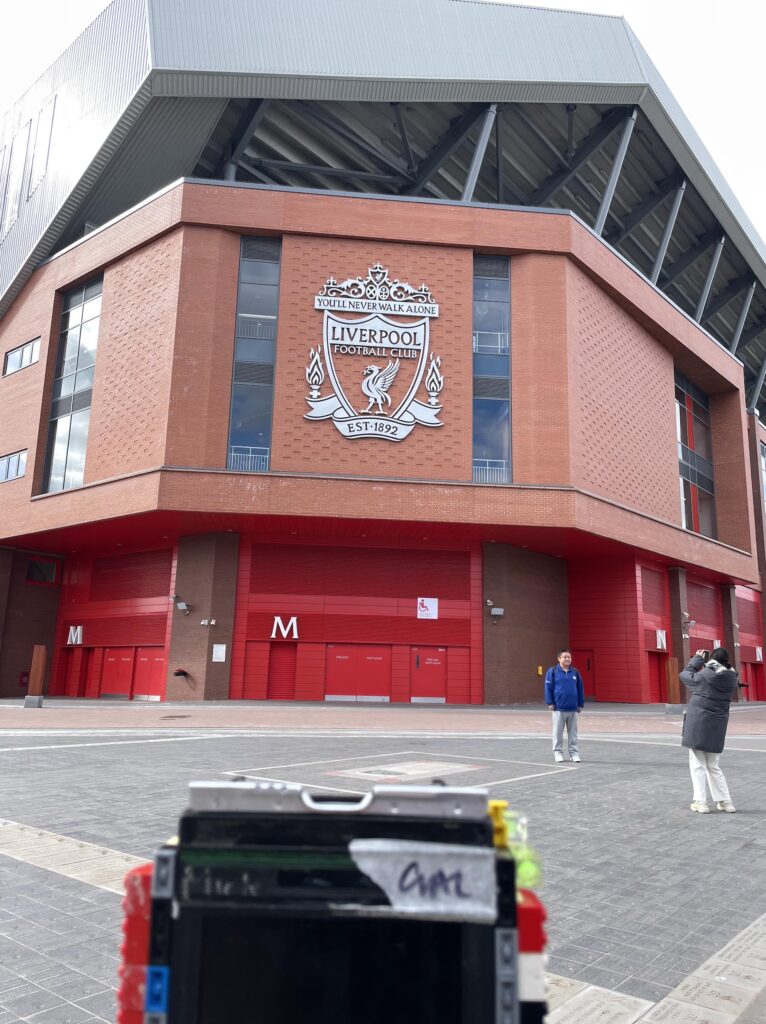
Paper Negative Portraiture: Connecting Before Kickoff
While pinhole photography helped me slow down, large-format portraiture sparked something else: connection. A large-format camera is an unusual sight in the age of smartphones—especially one made of Lego.
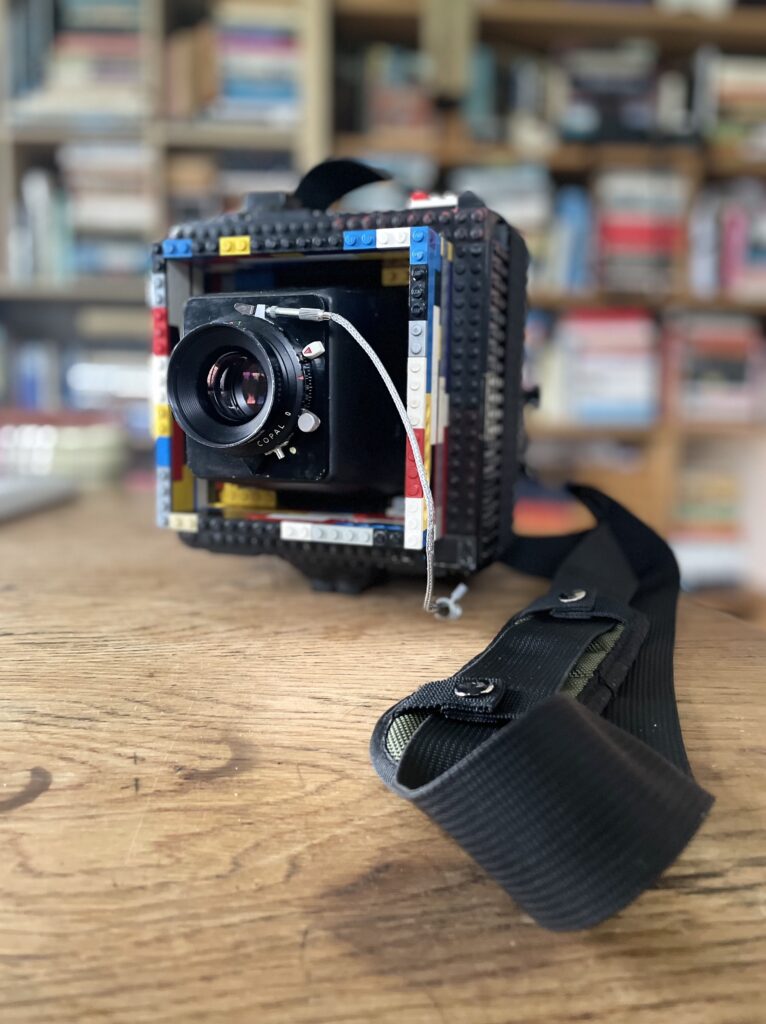
Let me introduce Norman, my sliding box field camera made from Lego and spare parts from a Sinar Norma. Norman became an instant Anfield conversation starter. Each portrait session was more than just a photograph—it was an exchange, a shared moment of excitement before the chaos of kickoff. Liverpool supporters come from all over the world to experience Anfield, and I had the privilege of capturing some of them in a way that felt meaningful. It reminded me that football, at its best, is about connection—not just to a team, but to a community, a history, a shared identity.
Norman is fitted with a Sinar 150mm f/5.6 lens, which I always shoot wide open. With an average ISO of 4, paper negatives need as much light as possible, so stopping down the aperture isn’t an option. Besides, what’s the point of shooting large format if you don’t embrace its depth of field?
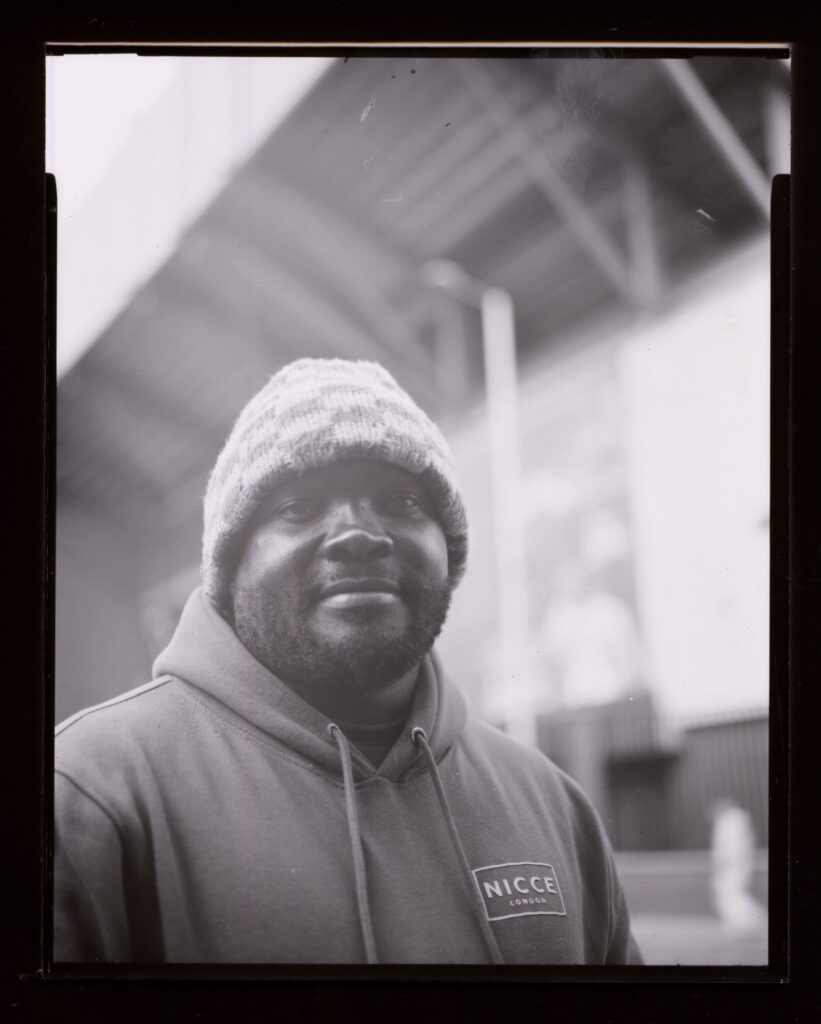
Each portrait was taken with a shutter speed of either 1/30s or 1/15s, depending on available light and subject distance. Even though the camera is built from Lego, the same bellows exposure compensation applies. When the bellows of a large-format camera are extended for close focusing, the increased distance between the lens and the paper reduces the light reaching the paper. To compensate, the shutter speed must be slowed down to prevent underexposure. For example, when a 150mm lens is extended to 300mm, the light intensity drops to one-quarter, requiring the shutter speed to be slowed by two stops—for instance, from 1/30s to 1/8s—to maintain proper exposure.
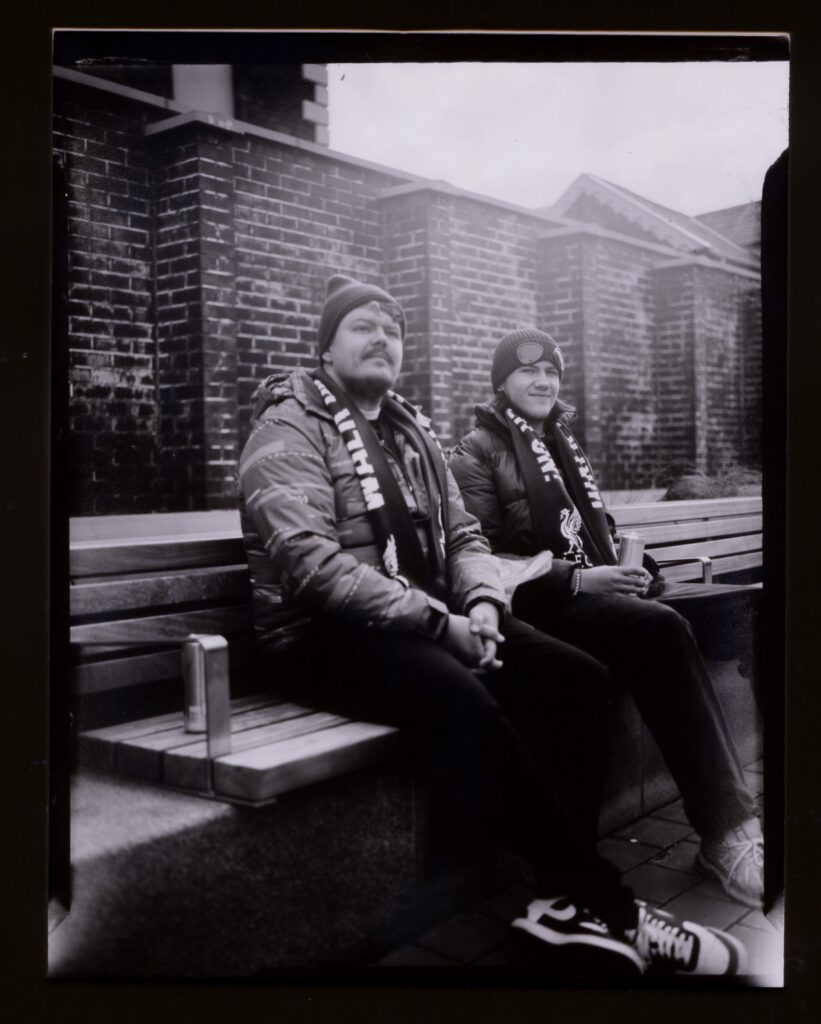
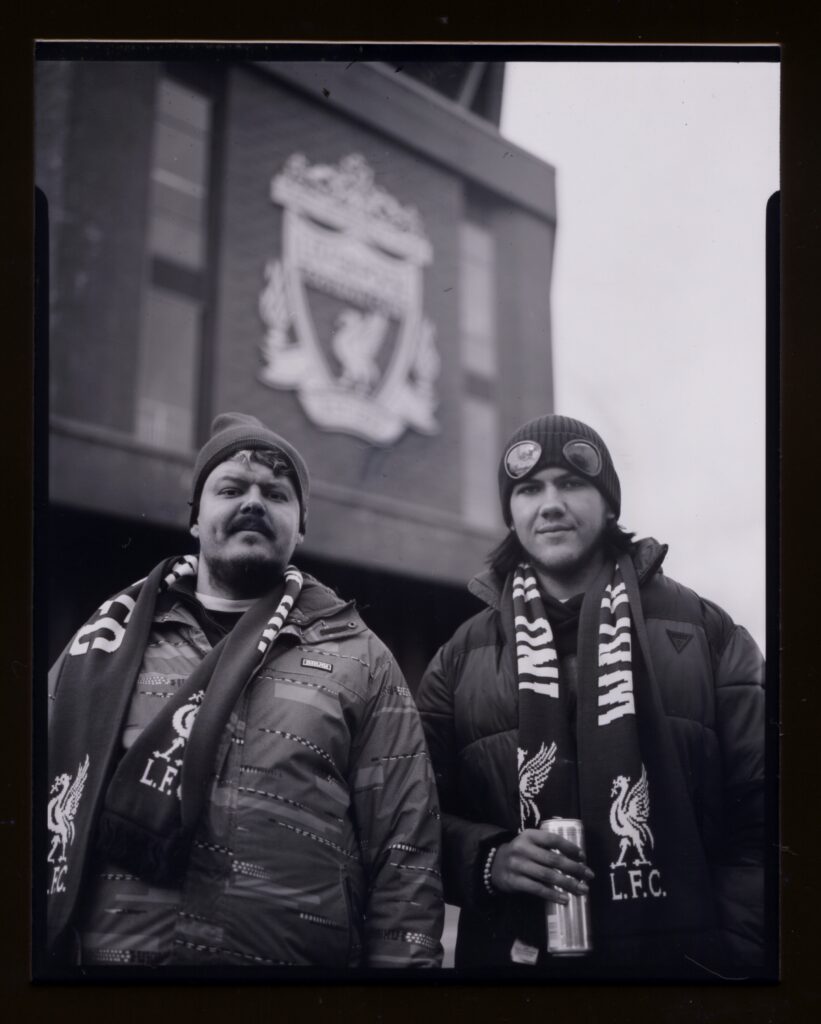
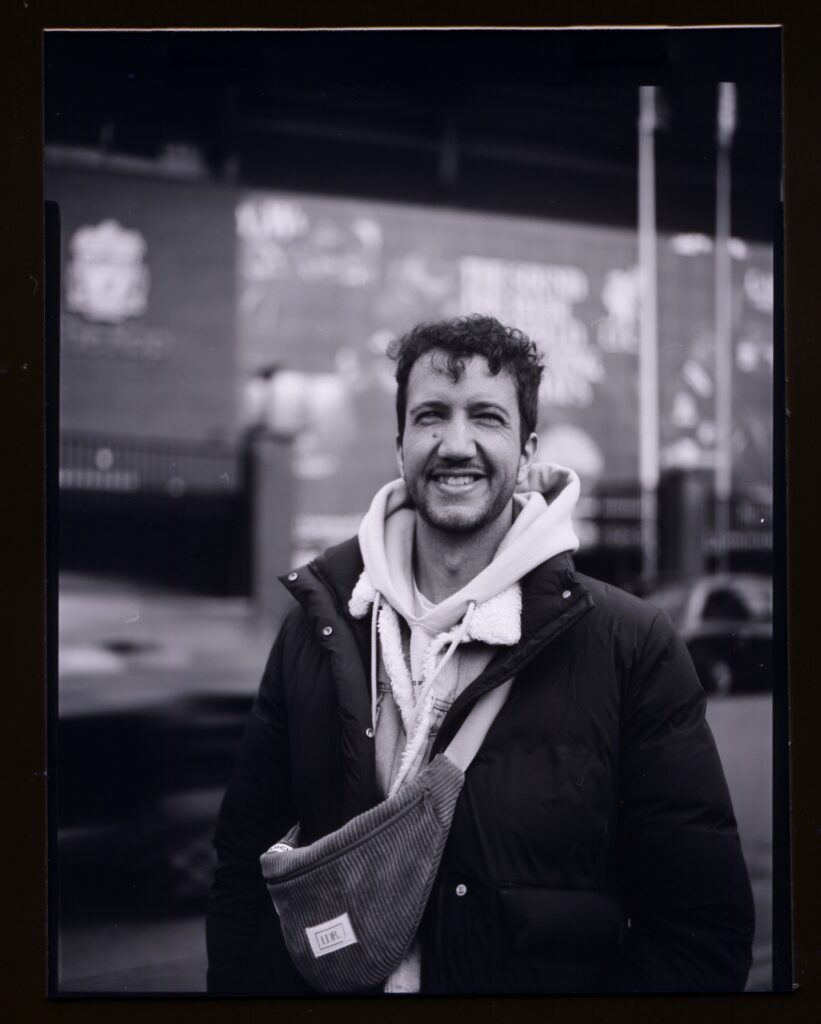
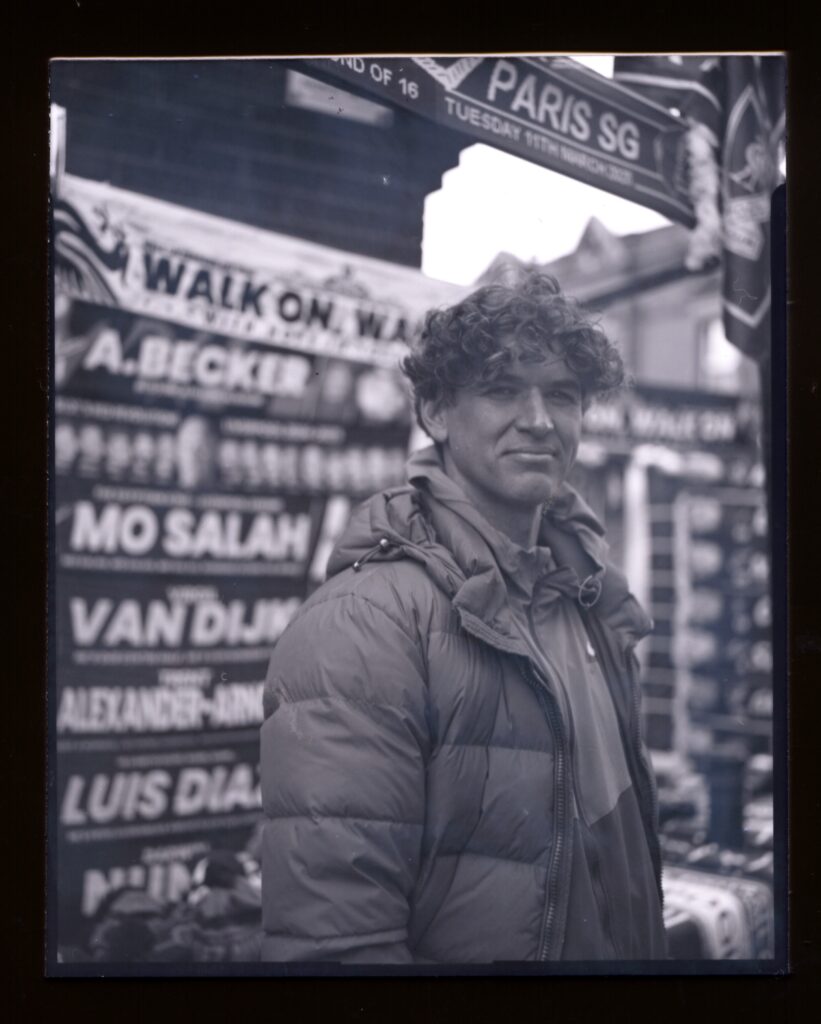
Norman is handheld and durable, which has transformed my outdoor portraiture. Unlike my other, more cumbersome large-format cameras, Norman allows me to move freely, set up spontaneously, and interact with people in a way that felt impossible before. It has made approaching strangers for portraits a more natural experience, increasing opportunities for genuine human connection.
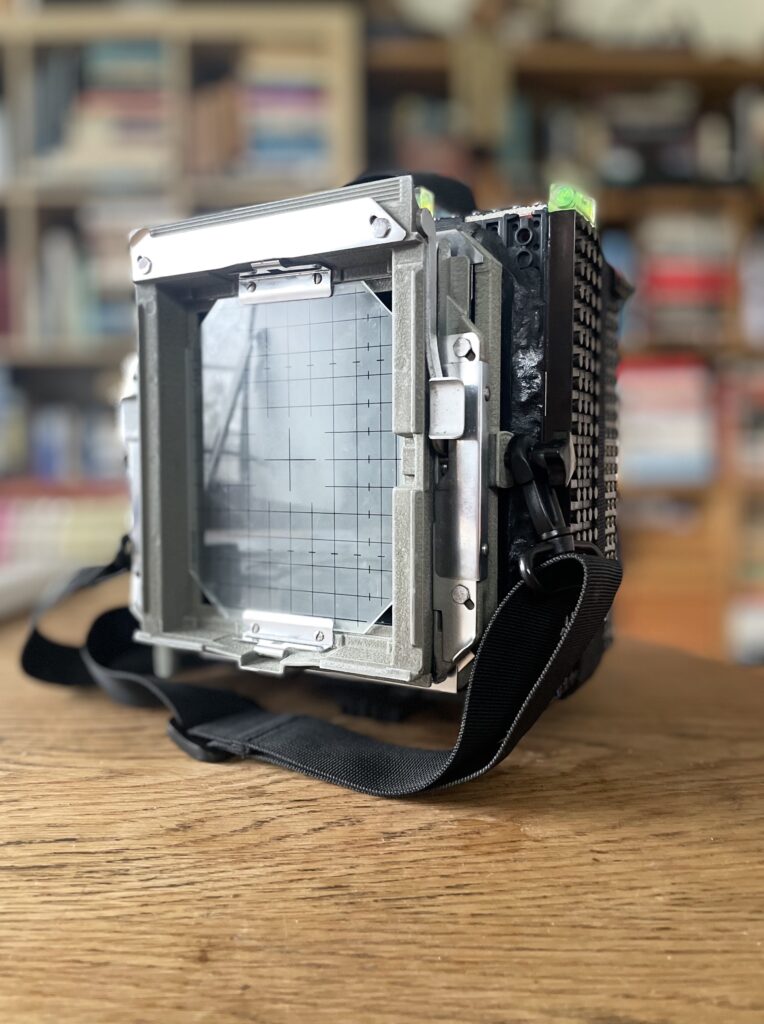
The Aftermath
By the time I packed up my gear and headed home for the darkroom, the usual pre-game nerves had melted away. Instead of fixating on the match, I had spent the hours before kickoff immersed in the energy of Anfield, fully present in the moment.
There’s something magical about seeing a photograph emerge in the developing tray. It’s a moment of revelation, evoking a profound sense of joy and accomplishment—deeply therapeutic in itself. Psychologists refer to this as the “aesthetic emotion”—the pleasure and satisfaction derived from creating or experiencing art. The process of developing prints in a darkroom has even been likened to a meditative practice: the dim red light, the rhythmic swishing of chemicals, and the slow emergence of an image create a calming, almost hypnotic experience. This aligns with mindfulness principles, which emphasise being fully present and letting go of distractions.
Emerging from the darkroom and my creative flow state, I scanned the images and sent them to the sitters—just in time for kickoff. The game didn’t pan out as I’d hoped, and credit to PSG for a solid performance over two legs. Football will always be a rollercoaster of emotions, but slow photography reminded me that there’s joy to be found in the process, not just the outcome.
So, to anyone feeling the weight of pre-match anxiety—or the sting of post-match blues—my advice is simple: get out and create. It’s a way to reconnect with yourself and the world around you. And you’ll feel better for it.
Ian Gamester is a film maker, photographer, college lecturer and social entrepreneur. As a film maker Ian has shot over 100 music videos for artists all over the globe, as a college lecturer and social entrepreneur Ian has delivered training and ran creative projects all over the UK supported by agencies such as Comic Relief, National Lottery, Arts Council, etc.
Share this post:
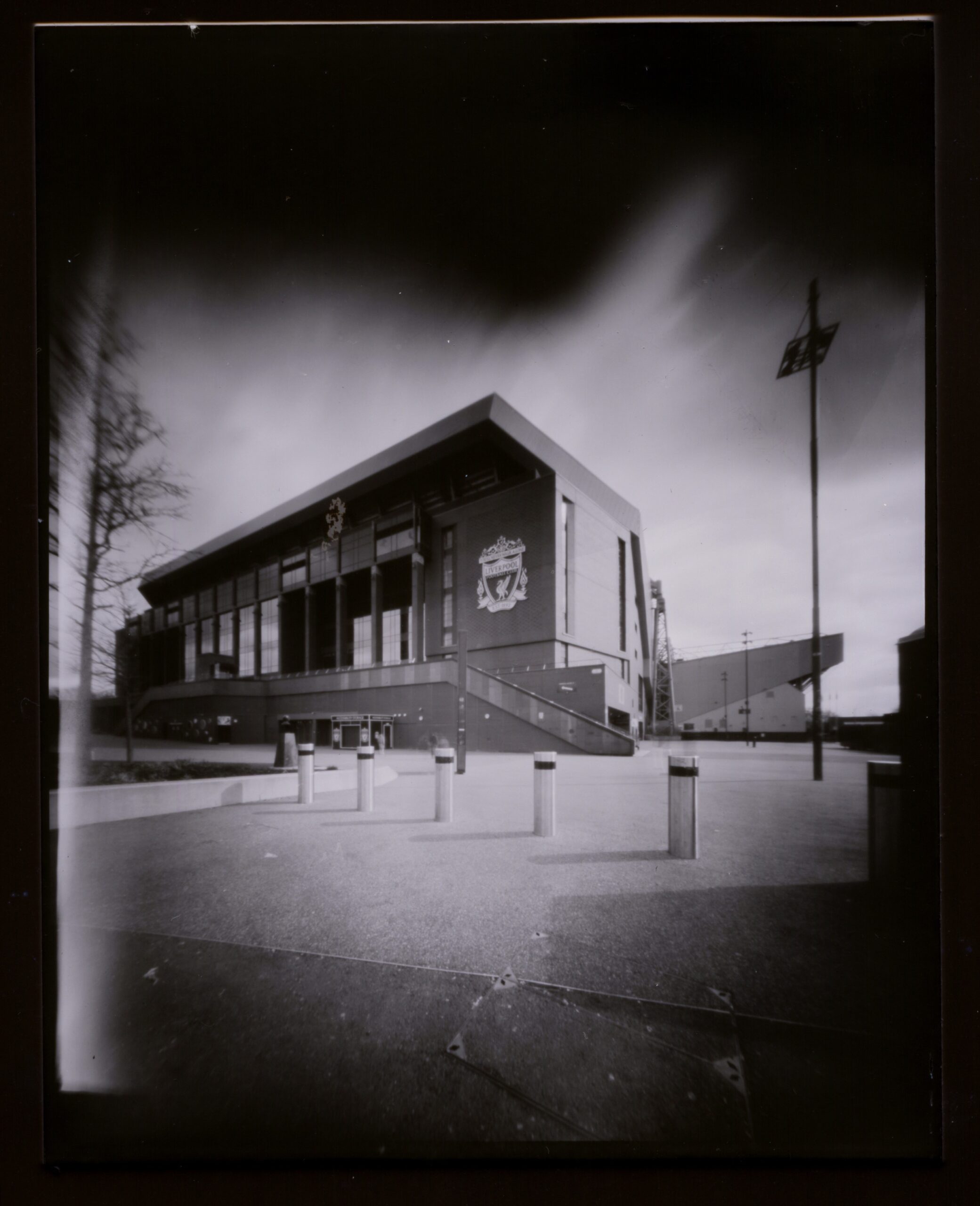

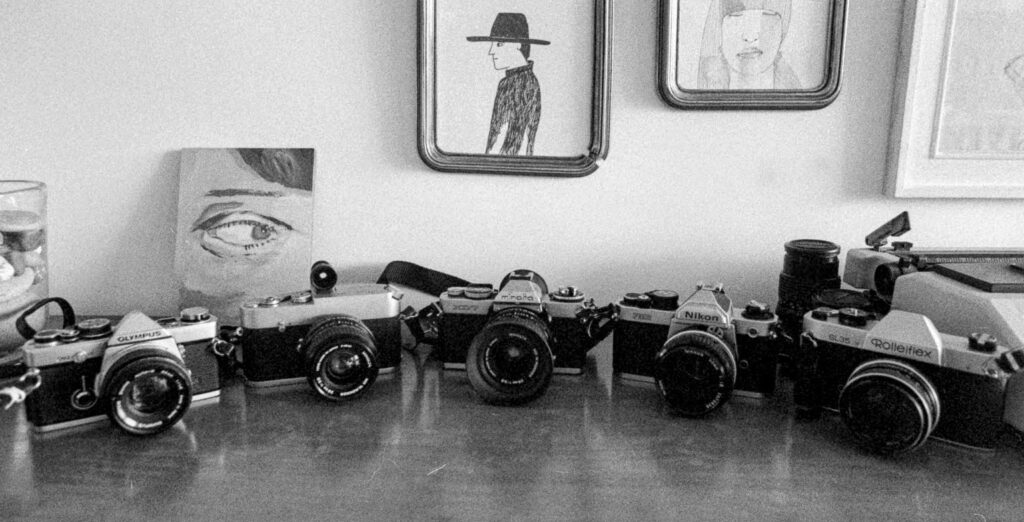
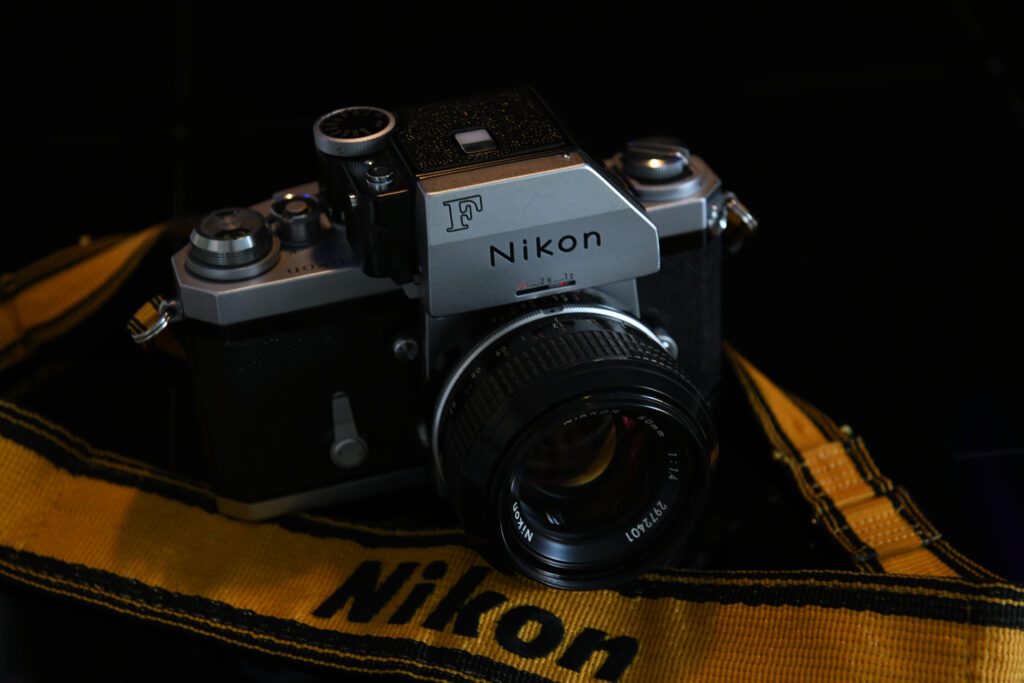
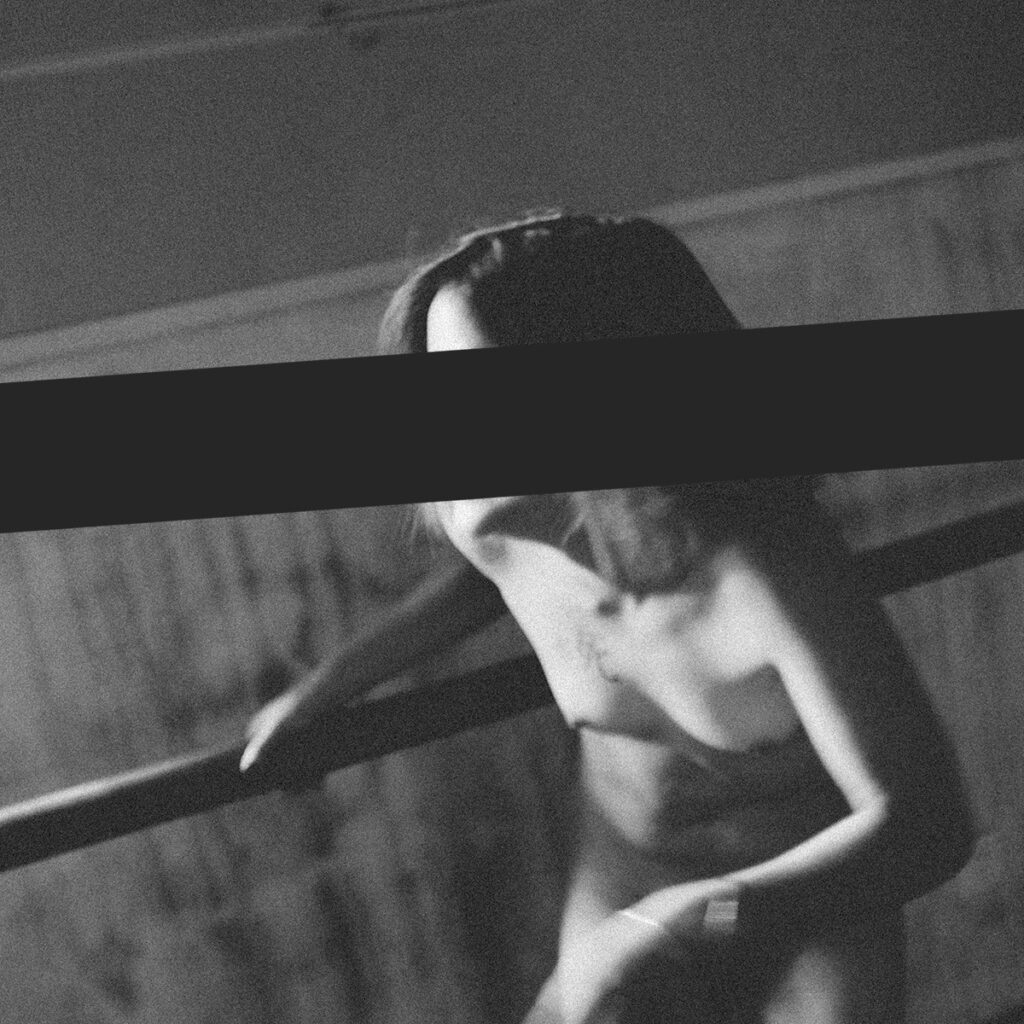




Comments
Ibraar Hussain on Calm Down – How Slow Photography Eased My Pre-Match Anfield Anxiety
Comment posted: 24/04/2025
I really enjoyed reading and following your thoughts.
I used to support Liverpool as a child, until '89 when I switched to my local club Spurs.
I've in the last 5 years abandoned Tottenham (as they represent corporatism in all it's nastiness with no regard for the paying fans) But Liverpool are a proper fans club and have always been a club to admire.
Thanks again
Comment posted: 24/04/2025
Comment posted: 24/04/2025
Jeffery Luhn on Calm Down – How Slow Photography Eased My Pre-Match Anfield Anxiety
Comment posted: 25/04/2025
Loved the portraits! I can't comment on Euro football, as I don't follow it and don't even know the rules. I did see a few matches while visiting Britain as a kid shooting for United Press International in 1970 and 71. It seemed exciting.
As for your cool Lego/Sinar camera...well, that's something I can relate to! Your focus was spot on in the portraits. Shooting wide open is always iffy, but you got it. Are you focusing with the ground glass, guessing, or measuring the distance? I have a WillTravel 3-D printed 4x5 camera with a 65mm Super Angulon, and I miss focus about 25% of the time unless I focus with a loupe. It really kills the mood. Pray tell, what's your approach?
Comment posted: 25/04/2025
Comment posted: 25/04/2025
Comment posted: 25/04/2025
Comment posted: 25/04/2025
Scott Ferguson on Calm Down – How Slow Photography Eased My Pre-Match Anfield Anxiety
Comment posted: 25/04/2025
Amazing post. I love the mix of very old techniques with repurposed toy components. I recently started shooting film still photography with some vintage gear, a 60’s M3 with even older glass and an early 70’s Hasselblad and I find that talking about the gear loosens people up when I am taking their picture — your setup does that at a whole other level. I also find the process of shooting very absorbing and sometimes meditative, especially on a world in reverse with the Hasselblad. I can’t yet imagine trying to shoot upside down and in reverse on a large format camera. I’m an Arsenal fan, congratulations on your imminent title. And I’ll be trying to stay calm on the run up to our Championship League match with PSG!
Comment posted: 25/04/2025
Russ Rosener on Calm Down – How Slow Photography Eased My Pre-Match Anfield Anxiety
Comment posted: 26/04/2025
Gotta love the Norman cam too. Who doesn't love playing with LEGOS?
Comment posted: 26/04/2025
Yuze Chen on Calm Down – How Slow Photography Eased My Pre-Match Anfield Anxiety
Comment posted: 01/08/2025